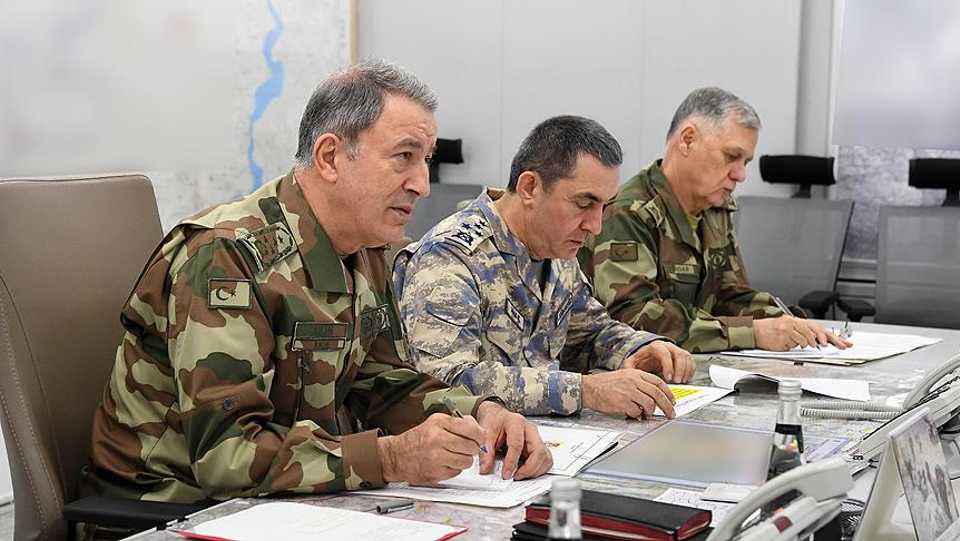
Afrin, in northwest Syria bordering Turkey, used to be a city with a population of 80,000. Taking advantage of the chaos caused by the civil war in Syria, the YPG took control of it in 2012. During the years of civil war, since there are no clashes in Afrin, its population increased up to 300,000. And finally, after the evacuation of Aleppo in December 2016, people fled to Afrin, increasing the population to around 750,000. Around 60 percent is Arabs, five percent on the Turkish border in the northwest of the city is Turkmen, and the rest are Kurds. Hundreds of its original residents, who could flee the YPG after 2012, are in Turkey.
Afrin is located between two strategic Turkish-backed Free Syrian Army (FSA)-held areas: Azaz and Idlib. The two FSA commanders who talked to TRT World, tell of the geographical importance of Afrin in these words: We need to connect two opposition areas to support each other. But using the road in Turkey along the border from Kilis to Reyhanlı takes five hours. If we drive directly from Azaz to Idlib through Tel Rifat, it would only take less than two hours.
That makes the Tel Rifat front of upmost importance to the operation.
Here is the information TRT World has obtained from the opposition commanders on the field:
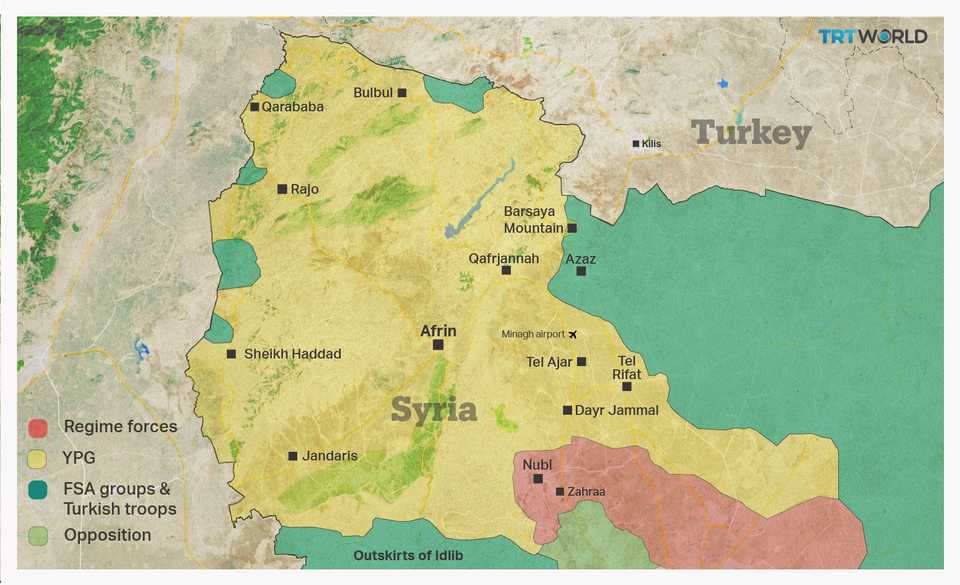
1- Azaz, Tel Rifat and Minagh Airport in the east
In total, around 10,000 FSA fighters are ready for the Afrin operation, some already actively taking part. More troops are being deployed to Azaz from Idlib. The troops in the Euphrates Shield area are not deployed for the Afrin operation, as they are mostly on patrol for any attacks from the YPG-held Manbij.
One of the first air bombardments by Turkish fighter jets have been conducted on this area. Also, FSA troops are ready to move ahead to Afrin on the ground.
The area’s strategic importance comes from its location, if the FSA will take control of the area, that will prevent the YPG from getting reinforcements from regime-held territories. And also, it will connect the Turkish army’s monitoring points in northern Idlib in the Euphrates Shield area.
On the first day of the operation, Russian troops in Afrin relocated to Tel Ajar, a town in northwestern Tel Rifat. The regime’s military training camp in Qafrjannah was also moved in Tel Ajar.
On Wednesday, when the clashes intensified in Tel Rifat, most of the Russian troops in Tel Ajar withdrew to the regime-held areas in the south, Nubl and Zahraa.
Nubl and Zahraa are two Shia villages, and Iranian-backed Shia militias are also on the ground.
The reinforcements coming from the YPG-held Manbij and Kobane are being taken to Afrin via those two villages. The regime supports the reinforcements.
2-Dar Jammal, south of Afrin
In the south, four Turkish army monitoring points were set up in Idlib, which prevents any YPG moves. There is no active fighting in this area. Turkish troops retaliate against the YPG’s shelling from time to time.
From Tel Rifat to Dar Jammal, there are 14 Arab villages, on which Turkey has been planning an operation against the YPG for more than a year.
Four paths going to Afrin
1- Barsaya Mountain, Sharran, Qatmah, Qafrjannah in the northeast
North of Azaz, along the Turkish border, lies the Barsaya mountain. It has been the base for the YPG’s armories and ammunition, and Turkish fighter jets destroyed most of it in the first couple of days. The FSA, on the other hand, has been shelling the area since last year.
It’s now an active frontline. Difficult to pass through, the mountain is the first challenge for the FSA. From the Barsaya Mountain up to Qafrjannah, its a hilly area where the largest number of YPG militants are based, and is also the path to Afrin.
After Qafrjannah, the next stop is Afrin city’s countryside.
2- Bulbul, Qarababa on the north
The first bombardment by Turkish fighter jets started in the Bulbul area. Starting from the border up to the mountains, most of the villages have been taken by the FSA. After those villages, there are mountains, which stand in front of the way to Afrin in the south. The mountainous area sees active fighting now.
3- Rajo, Seikh Haddad in the west
Rajo is also a mountainous area, where the YPG is based on the exit points of the straits. Up to the mountainous area, the FSA now controls 10 km of Raco. From Rajo to Seikh Haddad, Turkish troops and FSA fighters are waiting for the mines to be cleared.
4- Jandaris in the southwest
The YPG positions in Jandaris have been heavily bombarded by Turkish fighter jets, since the start of the operation. The plains of Jandaris continue with hills and straits towards Afrin. That’s why the FSA on the ground is supported by intensified air operations.
After the defeat of Daesh, YPG’s objective revealed
Weeks after the fight against Daesh in Syria was mostly over, Russia called on all parties to gather in Sochi to talk about the future of Syria, including the YPG. Turkey harshly opposed this.
And then the US plans on permanent support for the YPG were revealed, despite their promises that co-operation with the YPG would be only until Daesh was defeated. On January 13, the US-led coalition declared that they were creating a new “border defence force” again, including the YPG.
The same day, Turkey’s President Recep Tayyip Erdogan gave the signal for the country’s plans to start an operation in YPG-held Afrin, Syria’s border town with Turkey at its north.
And the air operation started a week later from three different points. The next day, ground troops started their move towards Afrin.
Afrin operation were discussed since 2016
Turkey first deployed its troops to its border with Syria near Afrin in July 2017. The Turkish-backed Free Syrian Army (FSA), on the other hand, was ready in the east.
Back then, the plan was to take control of Tel Rifat and Minagh Airport from the YPG, to cut their way to another YPG-held territory in the east, and to connect the opposition groups in the north and in Idlib. Before the talks come up with a solution, Hayat Tahrir al Sham, an al Qaeda-affiliated group, took control of most of Idlib, and plans changed. In Astana, talks led by Russia, Turkey and Iran, lend to the decision to set up military monitoring points in Idlib, before starting the operation.
Russia stops another possible operation in September
Two months later, the operation on Afrin was still on the table. And on September 4, Russia deployed troops and Syrian regime forces to east Afrin, to prevent clashes by creating a buffer zone between Turkish-backed opposition forces and the YPG.
According to the Moscow-based news website Sputnik, in a briefing to reporters, Chief of the Main Operational Directorate of the Russian Armed Forces, Commander Sergei Rudskoy said, “In order to prevent provocations and possible clashes between detachments of Free Syrian Army formations in the north of Syria and the Kurdish militia [YPG] with the assistance of the Russian reconciliation center, a de-confliction zone has been established in the Tel Rifat area.”
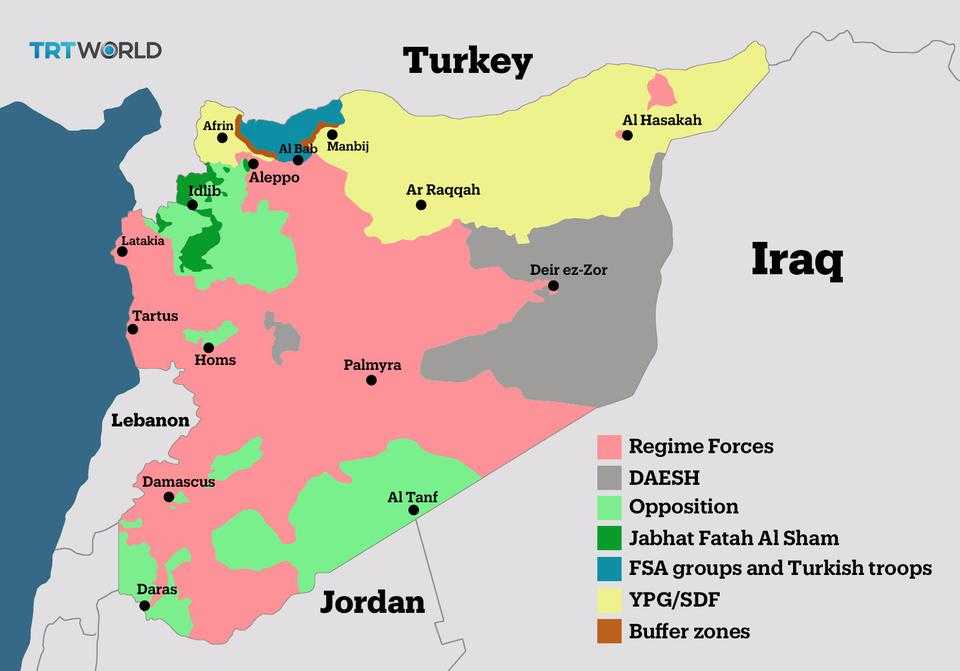
The US’ mediation efforts
Turkey’s plans for Tel Rifat and Minagh Airport did not only begin last July. At the end of 2016, Turkey was getting ready for an operation in the area, for the FSA to take over 14 Arab villages there. 150,000 Syrian refugees who took shelter in the camps in Azaz were also set to be sent to the area after the operation.
But the US took a mediation role between the FSA and the YPG, in a bid to stop Turkey’s possible operation against its ally. According to Mustafa Sajari, an opposition representative who holds talks with the US, the YPG promised to leave those villages and Tel Rifat to the FSA after weeks of negotiations. A promise that was never kept.
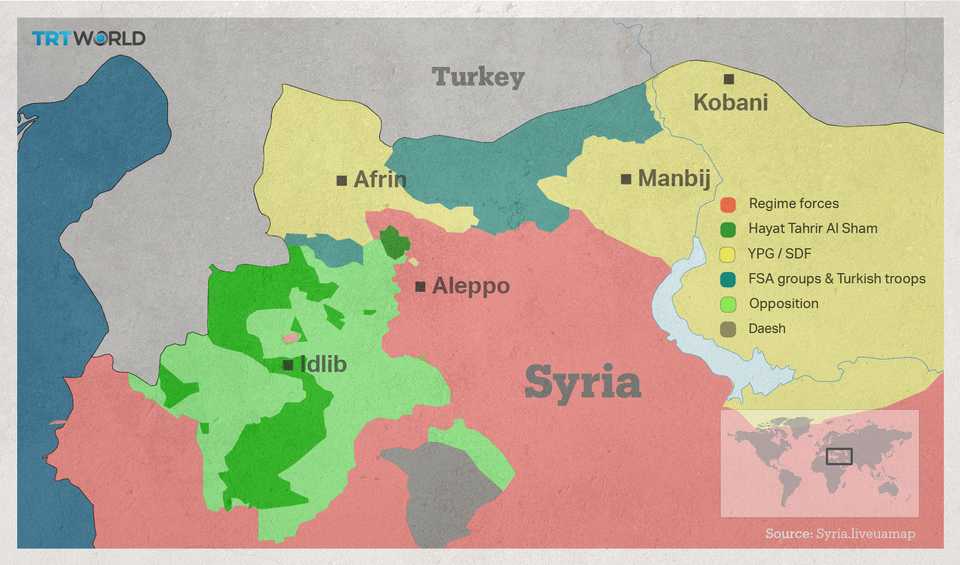
The YPG also didn’t keep its promise to leave Manbij, a city it took control of with the support of the US in August 2016. The same month, Turkey started its first military operation in Syria, Euphrates Shield, to defeat Daesh from its borders and also to prevent the creation of any corridor between YPG-held Manbij and Afrin.
The US has never cut its support for the YPG, in an excuse of using them in the fight against Daesh, which led the YPG to claim a quarter of Syria which was once controlled by Daesh.
Turkey’s reaction to the partnership is because of the YPG’s affiliation with the PKK, a designated terror group by Turkey, the US and the EU, and which has been fighting the Turkish state for more than 30 years.

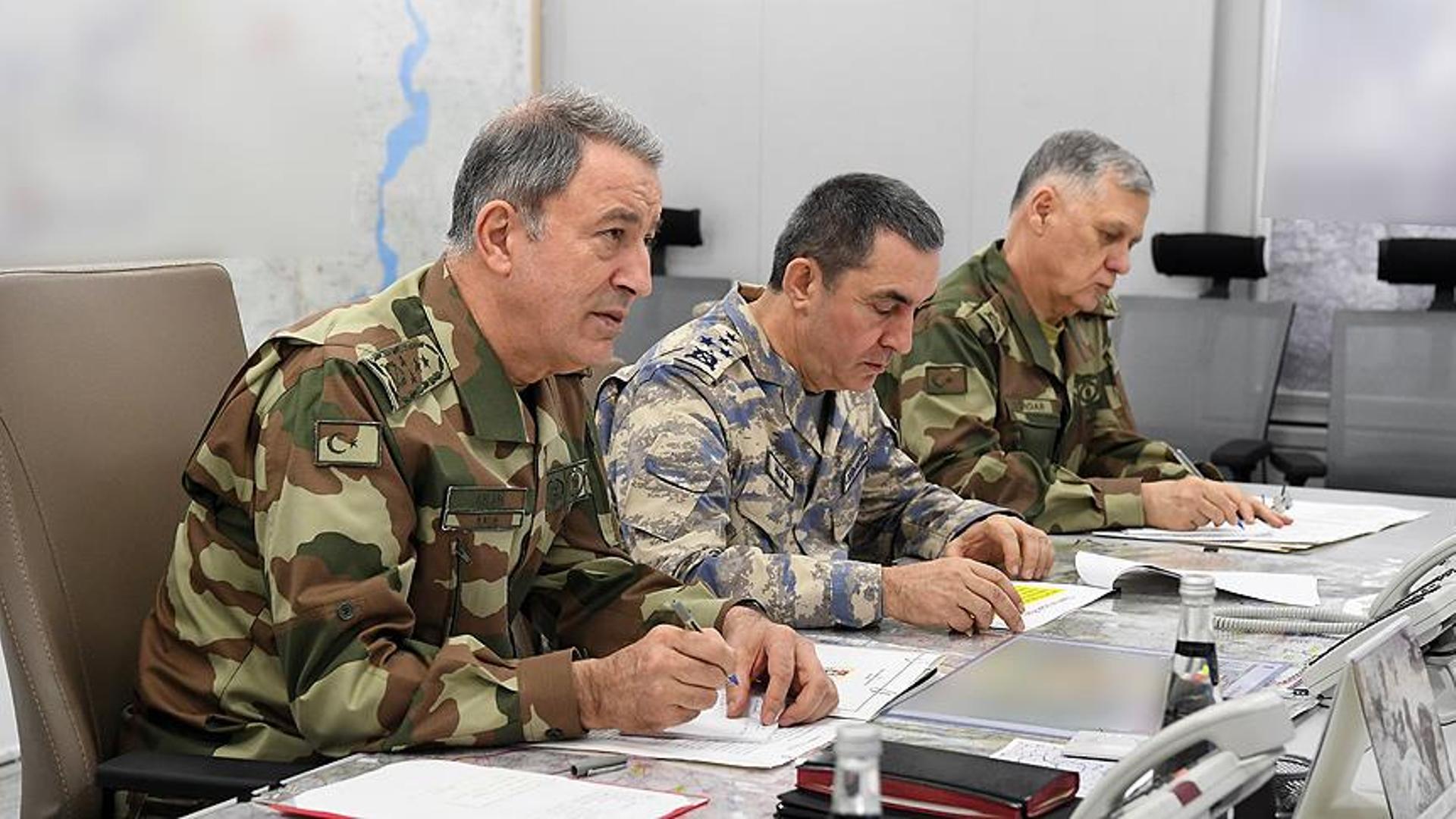








Discussion about this post